Friday Favorites 4/20/2012
April 20, 2012
Jared Ainscough, Assistant Art Director
What seems like a million years ago, my wife (girlfriend at the time) lived on Commonwealth Avenue in Allston. I always drove by the Wolfers showroom with a sense of amazement and wonder. The giant glass-front building glows like a candle day and night. Through the windows you see what looks like miles of chandeliers, lamps and lights burning away.
A little non-traditional maybe, this white, contemporary pendant is one of my favorites. The design is artfully modern, clean and simple but a bit off balance here and there. I like the pendant even better when it’s paired with a twin.
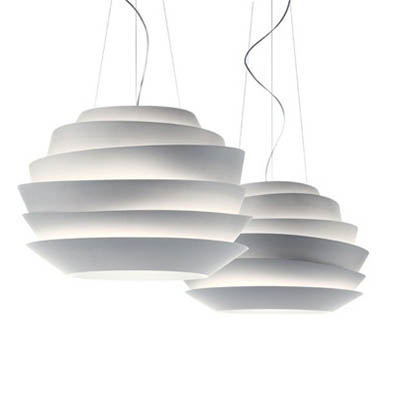
Photo courtesy of Wolfers
Debbie Hagan, Managing Editor
Artist’s colonies bring to mind enchanted getaways, places where you’ll communicate with your muse and rub shoulders with artists and poets. For many years, such a place existed about two hours north of Boston, and this new book, published by David R. Godine, Monadnock Summer: The Architectural Legacy of Dublin, New Hampshire, gives a panoramic view of this mountain village. While the town may have only 1,500 residents, it’s known for its lovely homes, encyclopedic in style, ranging from Cape Cod cottages to Italian villas to Shingle-style beauties.
Late nineteenth-century Boston Brahmins headed there for the summer and hired the best architectural firms in Boston and New York to construct their summer “cottages.†The short list of architects includes Charles A. Platt, Peabody & Stearns, Rotch and Tilden, Henry Vaughan and Lois Lilley Howe.
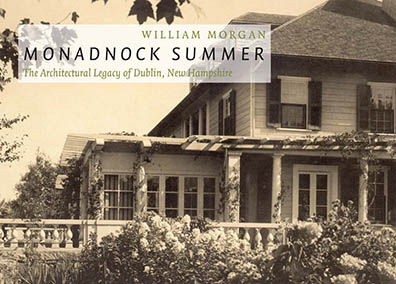
Photos courtesy of David R. Godine, publisher
Out of the 100 or so photographs in this book, I chose three to show a slightly more modern side to Dublin. Built in 1980, this “envelope house†was environmentally progressive for its time, using passive technology to create an envelope of air in the home’s core. Hot air from the greenhouse, moved by convection currents, heated the entire house. It was built for Carolyn Demorest, a modern architecture maven who worked at House Beautiful.
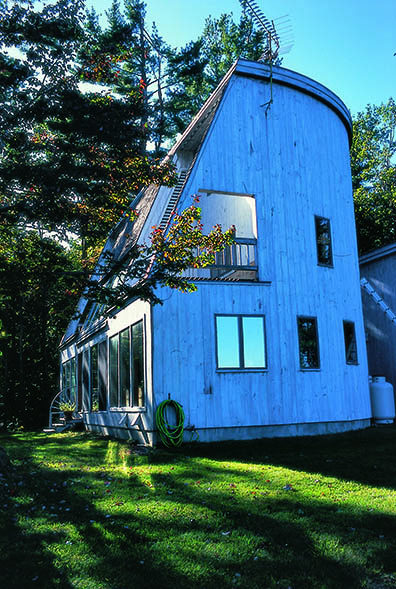
Envelope House
The grandest and most imposing Shingle-style house in Dublin was built in 1888 by Peabody & Stearns for Eliot Leighton, a railroad magnate. In 1979, Loring Catlin, a great-grandnephew of Leighton’s, decided to remove the servants’ wing and hired Robert A.M. Stern, then a Columbia University professor, to finish the end wall. Morgan writes, “Dublin is doubly blessed by having both a restored Shingle style landmark and an attractive example of Stern’s work.â€
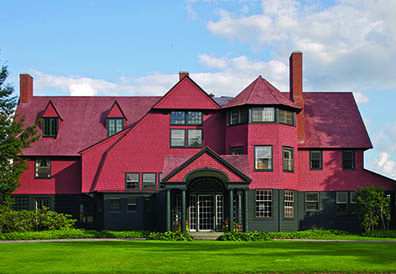
Renovated Leighton House
Maybe the most innovative house belongs to Daniel V. Scully, a Yale student of Charles Moore. His home is not just a tribute to Shingle style, but also reflects America’s love of automobiles. The kitchen looks like the hood of a 1940s Pontiac. Morgan writes, “It faces a smaller Greek temple, wherein is a dragster, the engine of which has been replaced by a woodstove; the route connecting the two buildings is outlined by a gasoline station sign and flanking rows of ornamental gazing balls.†Certainly it’s a one-of-a-kind.
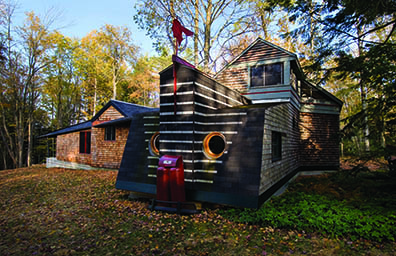
Scully House
This 158-page book is impressive in its research, done by William Morgan, and beautifully published by David R. Godine. It offers a wonderful mix of history, architecture and down-to-earth narrative.
Share
![NEH-Logo_Black[1] NEH-Logo_Black[1]](https://www.nehomemag.com/wp-content/uploads/2022/08/NEH-Logo_Black1-300x162.jpg)





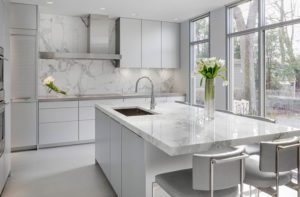
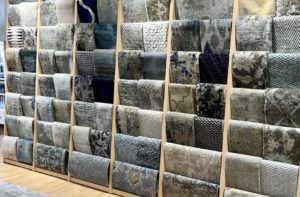

You must be logged in to post a comment.